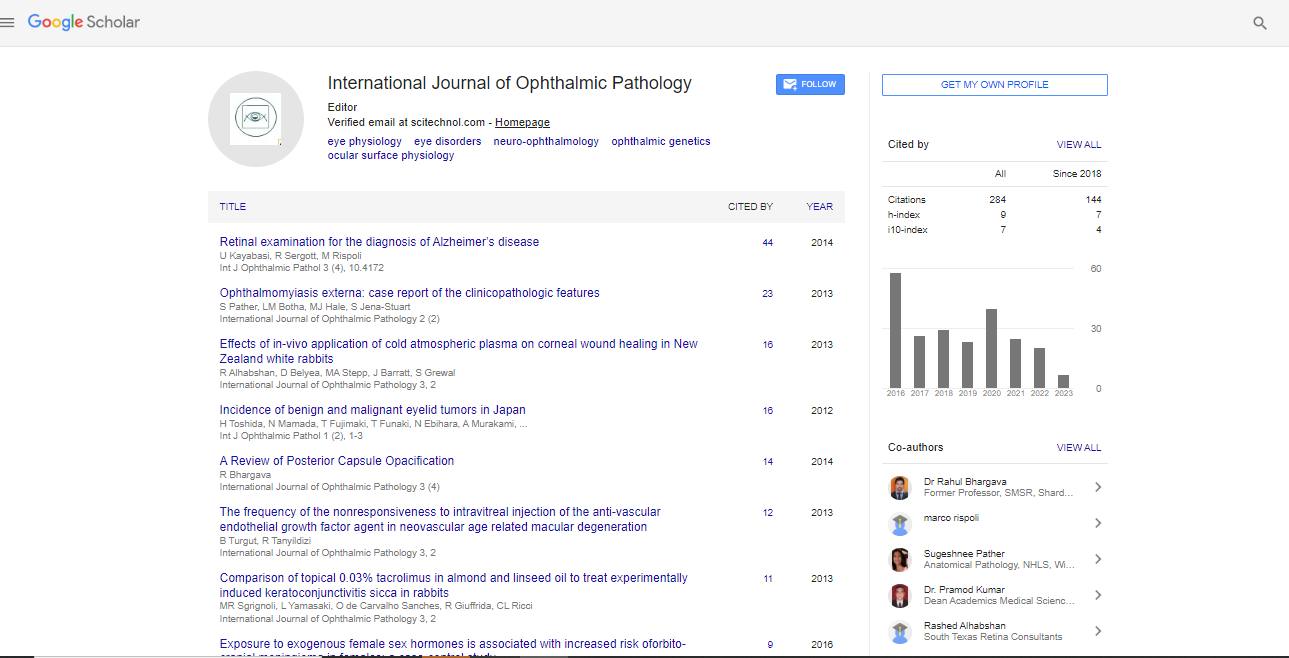Multimodal imaging and microperimetric analysis in sympathetic ophthalmia
Valeria Albana and Guerriero S
University of Bari, Italy
: Int J Ophthalmic Pathol
Abstract
Introduction: Sympathetic Ophthalmia is a rare, bilateral, granulomatous uveitis due to trauma or surgery to one eye.
Objective: To present a case of Sympathetic Ophthalmia indagated with Multimodal Imaging and Microperimetric Analysis before and during the corticosteroid and immunosuppressive treatment.
Methods: A 70-year-old male with Sympathetic Ophthalmia with history of eye enucleation by trauma. We have subjected him to optical coherence tomography (OCT), fluorescein angiography (FAG), indocyanine green angiography (ICGA), optical coherence tomography angiography (OCTA) with 3×3 mm squares, microperimetry (MP1).
Results: The subject reported blurred vision in right eye after twenty-five days by enucleation of the fellow eye. At the clinical exam we have reported: keratic precipitates, vitritis, papillitis, exudative retinal and foveal detachments captured by OCT, chorioretinitis, confirmed by FAG and ICGA (pinpoint hyperfluorescence). OCT Angiography indicated the decreased OCT-Angiography signal in the area of subretinal fluid, while areas with Retinal Pigment Ephitelium (RPE) not had alterations. Moreover OCTAngiography detected a lot of small choriocapillaris “flow voids” that corresponded to areas of choriocapillaris ischemia.
Conclusions: Already after the first month from the beginning the therapy, there was the regression of clinical signs. Although there was an improvement in visual acuity, there appeared to be an increase of choriocapillaris “flow voids” by OCT-Angiography findings. Moreover we have recorded loss of central vision and fixation stability at MP1.
Biography
E-mail: valeria.albano12@gmail.com
 Spanish
Spanish  Chinese
Chinese  Russian
Russian  German
German  French
French  Japanese
Japanese  Portuguese
Portuguese  Hindi
Hindi 